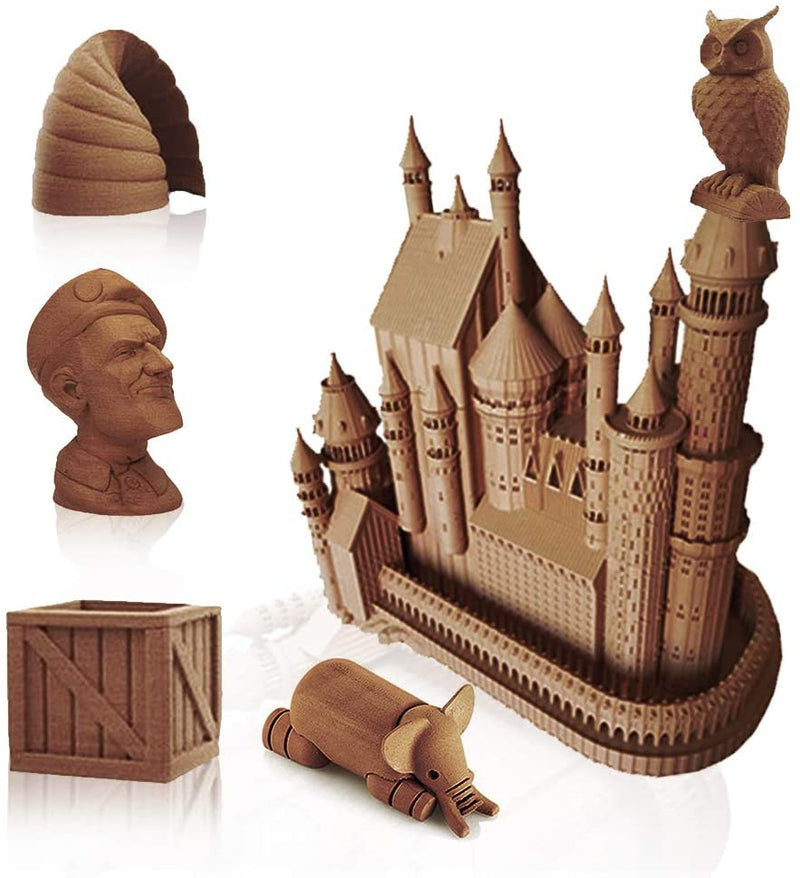Unleash Your Creativity: Discover the Magic of Wood Filament in 3D Printing!
In the world of 3D printing, innovative materials are continually transforming creative possibilities. One such remarkable material is wood filament, which combines the best of both worlds: the versatility of 3D printing with the natural aesthetics of wood. This unique filament has gained traction among makers and hobbyists alike, offering a fresh approach to design and fabrication. With an increasing number of creators exploring the potential of wood filament, this article aims to delve into its properties, uses, and advantages. Whether you're a seasoned printer or just starting your 3D printing journey, understanding wood filament can unlock new dimensions in your projects.

Understanding Wood Filament
Wood filament is a type of 3D printing material that primarily consists of PLA (polylactic acid) blended with fine wood fibers. This combination not only makes it biodegradable but also gives it the authentic look and feel of natural wood. The manufacturing process typically involves mixing PLA with wood particles sourced from recycled wood, which significantly reduces waste and promotes sustainability. There are various types of wood filaments available, each offering different wood species' characteristics, like pine, birch, or even exotic woods. Each type can impart unique textures and finishes to printed objects, making it an exciting option for a wide range of projects. My friend Alex, an avid woodworker, recently experimented with birch wood filament and was thrilled with how closely the finished product resembled real wood, down to the fine grain patterns.
Properties of Wood Filament
Wood filament possesses several distinctive physical and aesthetic properties that make it a favorite among 3D printing enthusiasts. Its texture is typically smooth, resembling that of polished wood, which adds an organic touch to printed objects. Additionally, wooden prints can be sanded, stained, or painted, allowing for further customization. In terms of strength, wood filament offers good durability, making it suitable for both decorative and functional items. However, it’s essential to pay attention to the printing characteristics, as wood filament requires specific temperature settings—usually around 190°C to 220°C—to ensure optimal adhesion and layer bonding. The filament can also be prone to clogging if not used correctly, a challenge that my friend Sarah encountered during her first attempt. After adjusting her printer settings, she found that slowing down the print speed significantly improved her results.
Applications of Wood Filament in 3D Printing
The applications of wood filament in 3D printing are as varied as the creative minds using it. Artists and designers often utilize it to create stunning sculptures, intricate models, and unique decorative items. Its ability to mimic real wood makes it ideal for projects where aesthetics are paramount. Additionally, wood filament can be employed to produce functional parts, such as custom handles, knobs, or even furniture components, all while maintaining an appealing look. Prototyping is another area where wood filament shines, as it allows designers to visualize and test their concepts in a material that closely resembles the final product. For instance, my colleague Tom recently used wood filament to prototype a lamp design, successfully showcasing its form and finish to potential clients, which ultimately led to a successful project pitch.
Advantages of Using Wood Filament
Using wood filament in 3D printing comes with a multitude of advantages over traditional plastic filaments. First and foremost, it offers environmental benefits due to its biodegradable nature, making it a more sustainable choice for eco-conscious creators. The aesthetic appeal of wood filament cannot be overstated; it provides a warm, natural look that enhances the visual quality of printed objects. Furthermore, the versatility in design is a significant advantage—wood filament can be used for a wide array of projects, from artistic endeavors to practical applications. The unique scent of wood while printing is another delightful feature that adds a sensory element to the experience. When my friend Lisa first printed with wood filament, she remarked on how the subtle aroma of pine transported her back to her childhood days spent in her grandfather’s workshop, enriching her creative process.
Exploring the Benefits of Wood Filament in 3D Printing
Wood filament represents a captivating frontier in the realm of 3D printing, merging technology with the natural beauty of wood. Its unique properties, diverse applications, and numerous advantages make it an excellent choice for anyone looking to enhance their projects. Whether you're creating art, functional items, or prototypes, wood filament opens up a world of possibilities that can breathe life into your designs. Embrace this innovative material and let your creativity flourish as you explore the vast potential of wood filament in your 3D printing journey.








